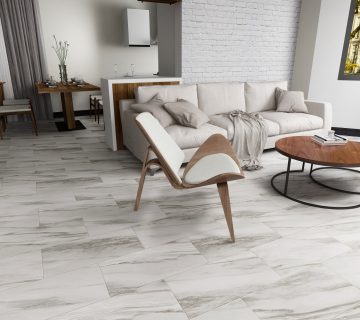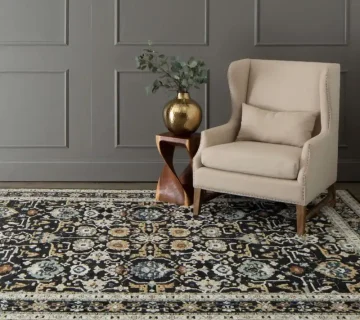Whether you’re building a brand-new home or are interested in hiring a remodeling contractor to give your current home a new look, it is important to make informed decisions about the type of products you choose. After all, these materials will be incorporated into your daily existence for as long as they are present in your home. Therefore, it is essential to be sure that you are going to be able and willing to commit to all of the demands that correspond with your particular choice. The correct flooring installation should not only add personalized beauty to your home–you must also choose a style that best matches your daily needs, habits, and lifestyle. When you’re trying to decide which type of flooring is best for your family and your home, consider the following key points:
Location
It’s not particularly wise to install carpet in a kitchen or wood flooring in a bathroom. The same logic applies elsewhere in the home. While you might have a great idea in mind for a tile flooring design in your living room, stop to think about the practicality of placing that material in the location in question. Will anyone want to curl up with a bowl of popcorn and watch a movie on a hard tile floor? Likely not. Sure, wood flooring might look nice just as you come in through the front door, but then you’ll be faced with the dings and scratches that will inevitably result from frequent foot traffic from the outdoors. It is important not to get caught up in how pretty your flooring choice looks in the sample book but think about how practical this choice will be when actually installed in your home instead.
Looks
When it comes to choosing a flooring style, your options are practically limitless. Tiles can be arranged in myriad designs. Wood flooring is versatile enough to create a classic upscale atmosphere, a rustic ranch vibe, and everything in between. Carpets come in all colors and textures. To be sure that you’re fully informed about what’s out there before you commit to a purchase, consult a flooring contractor–or two–to see samples of their work. This not only lets you decide who to use for your installation project but also gives you a broader sense of your options. It may also be a good idea to look at home decor publications. When you know what you’re looking for, you can be sure to select the choice that best matches your tastes and your current home furnishings.
Costs
There are two aspects of cost when it comes to flooring: the initial purchase and installation cost, and the potential costs of future repairs and upkeep. It’s simply a fact that certain materials, such as hardwood and tile, are more expensive to obtain than other options and will require more time, skill, and effort for your flooring contractor to install. Things get even more confusing when you break down your options into sub-categories: some woods cost more than others, as do different types of tile material. Luckily, if you’re afraid of spending too much money, you have options. If you’re looking for the sleek appearance of a wood floor but just can’t swing the cost of this option, perhaps wood laminate flooring would be a less expensive substitute.The second aspect of cost, ongoing maintenance, is also important if you want your floors to maintain the same form and function in 10 years as they had on the day you first walked on them. Hardwood refinishing and repair, tile resetting and replacement, and carpet spot-dyeing and stretching all fall into this wide category. The exact cost will vary depending on the size and nature of the job, the floor contractor you choose, and other factors. The overall longevity and aesthetic preservation of your floors also depends on your commitment to daily care, so also stop to consider if you’re willing to sweep, polish, or vacuum regularly, and factor that into your decision. Some materials require diligent care, while others are stronger and more durable.
Health
Health is not something that many people think about when considering flooring, but the fact is that carpets can actually trap allergens such as dust and pollen. Unless you’re willing to stay on top of your vacuuming and routine carpet cleaning, these health hazards can build up over time. This means that although the carpets may appear clean, they are actually sending up an invisible puff of impurities that can exacerbate allergies and asthma with every step. Flooring types that are easier to maintain generally can be cleaned with the stroke of a broom and do not harbor any hidden threats.
The perfect flooring choice is different for everyone. Some families prefer carpeting for its welcoming feel and kid-friendly qualities. Some are willing to put a lot of work into maintaining their floor’s appearance and promoting its longevity, while others are looking for pure functionality. If you’re in the market for a new floor and want to select a type that will fulfill all your requirements and provide the strength to last for years to come, consider the factors above. You’ll find that when you take your overall needs into account before you make a selection, you’ll come out with a flooring installation that will best match your lifestyle.



